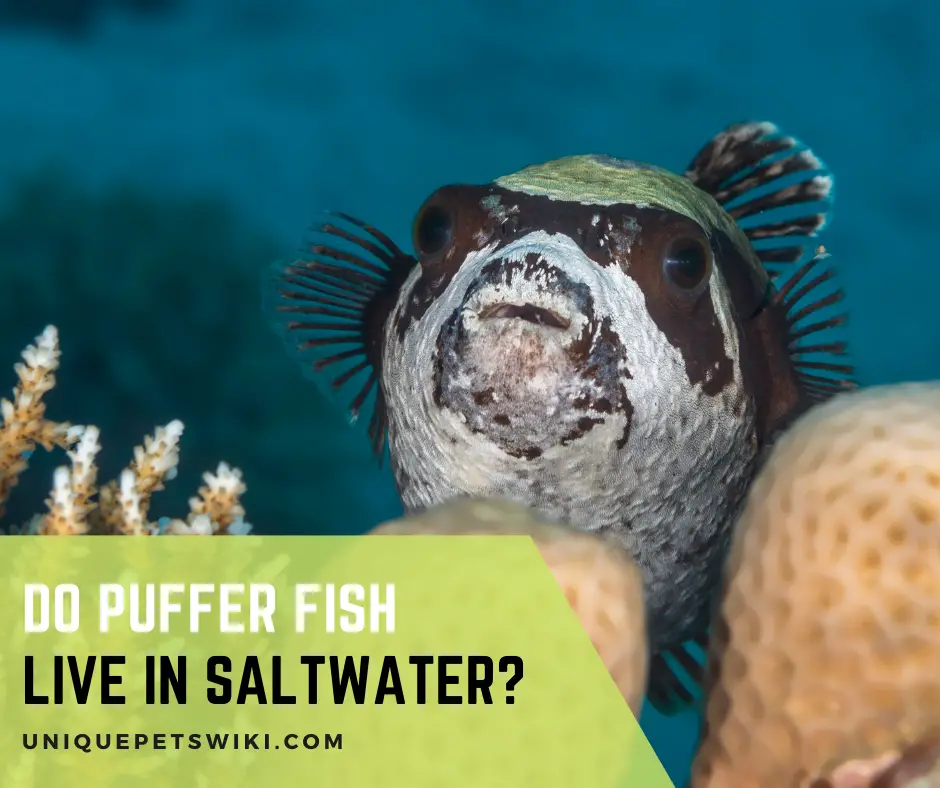Pufferfish are gaining popularity as aquarium pets owning to their unique looks and hardy nature. But do Puffer fish live in saltwater? Or are there only freshwater species of pufferfish?
If you too are wondering about this, then read on, this guide is for you!
Here we will cover exactly where puffer fish live and their tank and water requirements in case you plan to keep pet pufferfish.
Contents
Do Puffer Fish Live In Saltwater?
Pufferfish live in many bodies of water around the world. Typically, they are found in warm, tropical waters. A majority of pufferfish are found in salt water or seawater. However, there are several species of freshwater pufferfish found in lakes and rivers, as well.
Where do Puffer Fish Live?
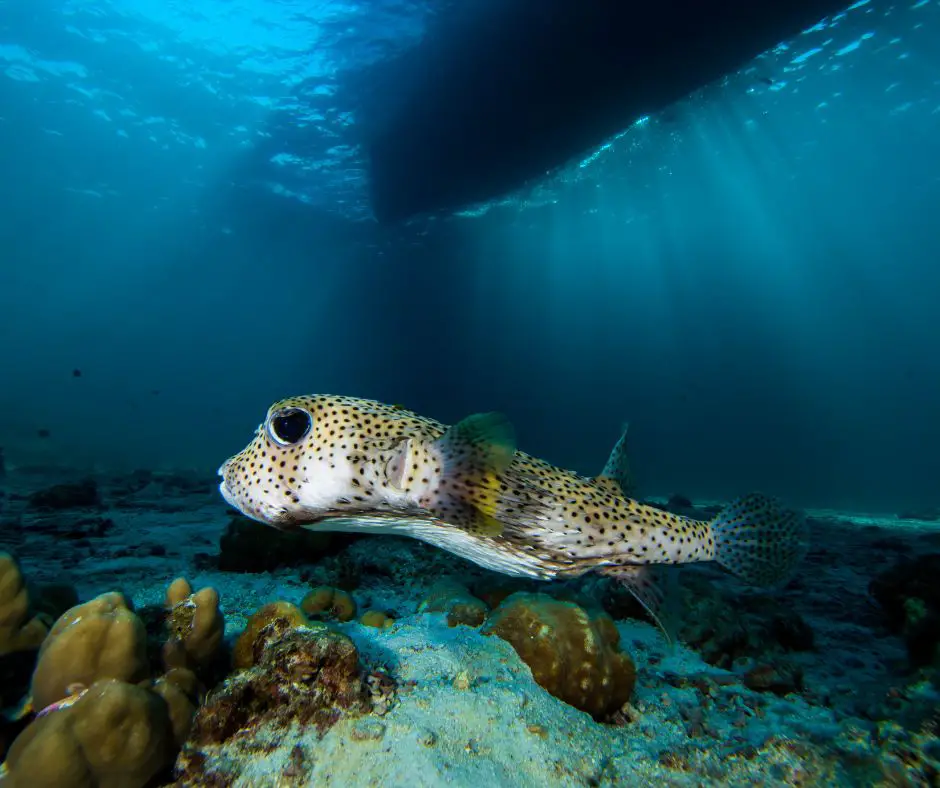
Out of the nearly 185 varieties of pufferfish existing in the world, almost 80 to 100 species are known to live in salt water. Only about 30 varieties of pufferfish spend their entire lifecycles in fresh water.
Many species of pufferfish are even known to move back and forth between freshwater and saltwater environments and some live in estuaries, inshore water, or brackish water between rivers and sea.
Pufferfish mostly prefer warm and shallow waters. They are found abundantly in the tropics and sub-tropics and in moderate numbers around the temperate zones. You won’t find them in the frigid or cold waters of the polar zone.
What Types of Puffer Fish Live In Saltwater?

As mentioned earlier, there are nearly 185 odd varieties of pufferfish on this planet with more species being discovered from time to time.
Of these, almost 80 to 100 species are known to only live in salt water. These marine pufferfish include species such as Dogface Puffer, Porcupine Puffer, Saddle Valentini Pufferfish, Stars and Stripes puffer, etc. The following table shows some features of the popular marine pufferfish species.
| Name and Scientific Name | Tank Size | Growing Size | Temperament | Care Level |
| Guineafowl Puffer (Arothron meleagris) | 100 gallons | 20 inches | Semi-aggressive | Easy |
| Dogface Puffer(Arothron nigropunctatus) | 180 gallons | 12 inches | Non-aggressive | Moderate |
| Striped Burrfish (Chilomycterus schoepfii) | 200 gallons | 11 inches | Aggressive towards other species | Difficult to keep |
| Saddle Valentini Puffer (Canthigastar valentini) | 50 gallons | 4 ½ inches | Semi-aggressive | Easy |
| Porcupine Puffer (Diodon holocanthus) | 180 gallons | 12 inches | Semi-aggressive | Easy |
| Stars and Stripes Puffer (Aronthron rispidus) | 180 gallons | 18 inches | Semi-aggressive | Easy |
Water Requirements for Saltwater Puffers
The main tank requirements of saltwater or marine pufferfish are clean water with sufficient salinity, adequate space for them to swim, and plenty of sand for digging.
Here are the primary water parameters for marine pufferfish:
- Water flow – the tank should have areas of high and low flow. (Reduced water flow in the lower to middle areas of the tank.
- Water hardness – between 8 and 12 KH (3 – 5 meq/l)
- Temperature – between 75 and 82 F
- pH – between 8 and 8.4
- Ammonia – Should not cross 0.1 ppm
- Nitrate – acceptable is 0.25 ppm, but not more than 5 ppm
- Nitrite – less than 0.2 ppm or 200 ppb.
- Oxygen – between 5.5 and 8 mg/l
API SALTWATER MASTER TEST KIT 550-Test Saltwater Aquarium Water Test Kit
- Contains one (1) API SALTWATER MASTER TEST KIT 550-Test Saltwater Aquarium Water Test Kit, including 6 bottles of testing solution, 1 color card and 4 glass test tubes with cap
- Helps prevent invisible water problems that can be harmful to fish and cause fish loss
- Accurately monitors 4 most vital water parameters levels in saltwater aquariums: high range pH, ammonia, nitrite and nitrate
- Designed for use in saltwater aquariums
- Use for weekly monitoring and when water or fish problems appear
Last update on 2022-12-30 / Affiliate links / Images from Amazon Product Advertising API
Differences Between Saltwater and Freshwater Puffer Fish
There are several differences between saltwater and freshwater puffer fish. These include the physiological as well as anatomical differences and their requirements in terms of water parameters, etc.
Physiological differences– Saltwater puffers tend to lose salts through their skin. Freshwater puffers absorb salt through their skin. Some varieties of pufferfish are equipped to handle both salt and fresh water.
Toxicity – Almost all varieties of saltwater pufferfish are known to contain the deadly tetrodotoxin (TTX) in their reproductive organs, liver, and skin. However, not all varieties of freshwater puffers contain this TTX toxin.
Anatomical differences – Most saltwater pufferfish that live near coral reefs are available in a wide variety of colors. These vibrant colors help them camouflage better. Freshwater puffer fish do not have varying habitats and, resultantly, have dull and fewer colors. Also, saltwater puffers are larger in size and most grow between 2 inches to several feet. Freshwater puffers grow between 1-24 inches in length.
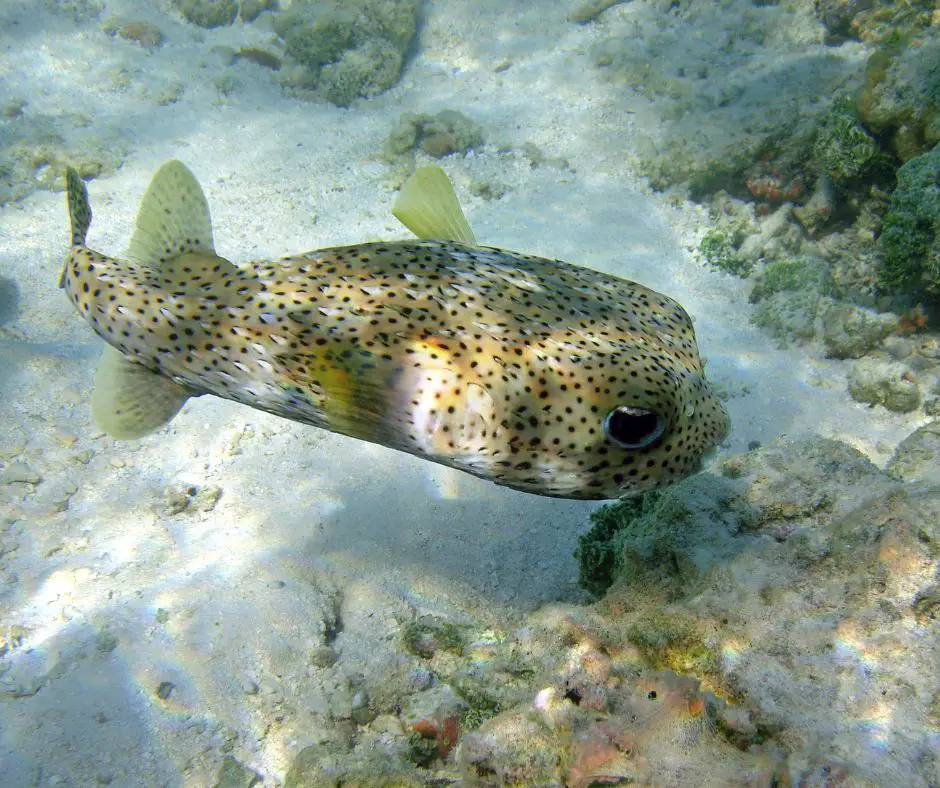
Selection/varieties/numbers – About 80% of puffers are at home in seawater and only 30 pufferfish species live their entire lifecycles in fresh water. This means that the selection of freshwater pufferfish is more limited than marine puffer varieties.
Water parameter differences – Saltwater pufferfish need salinity levels between 34-36 ppt whereas freshwater puffers can only tolerate salinity of less than 1 ppt. (This varies from species to species). Also, marine puffers prefer pH above 8 while freshwater puffers require pH in the range of 7 to 7.6.
Cost of keeping – Saltwater pufferfish are costlier to keep as they need very large tanks. The setup and upkeep of these large tanks can be expensive. Also, you need to maintain the marine tank’s water parameters rather strictly so you’d spend on water testing kits, marine salts, powerheads, protein skimmers, etc.
Which is Better: Saltwater Puffer Fish or Fresh Pufferfish
Saltwater pufferfish are more difficult to maintain as pets. This is because the natural habitats of marine or saltwater pufferfish are fairly constant. You won’t find too much variation in the salinity and pH levels of the ocean.
Resultantly, when you keep a marine pufferfish as a pet, you would spend a lot of time maintaining the tank’s salinity and pH levels.
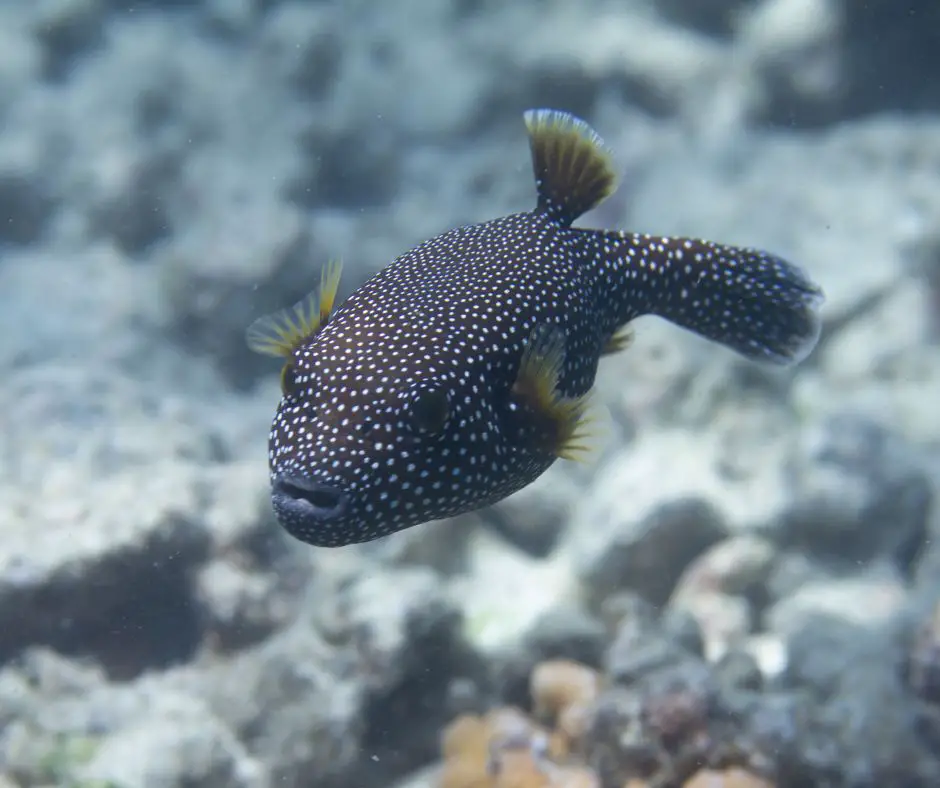
In the case of freshwater pufferfish that live in lakes and rivers, their natural habitats themselves are changing rapidly. This means that the freshwater pufferfish are evolved to be a lot hardier and are probably used to fluctuations in water parameters.
As mentioned above, the cost of breeding seawater pufferfish is usually greater than that of maintaining pufferfish that come from freshwater.
Many freshwater pufferfish varieties are not toxic whereas almost all seawater puffers contain the deadly TTX toxin. It is important to note that the pufferfish’s diet can play a major role in their toxicity. Only the species that consume shelled foods like crustaceans containing tetrodotoxin-laden bacteria on them are known to carry the TTX poison.
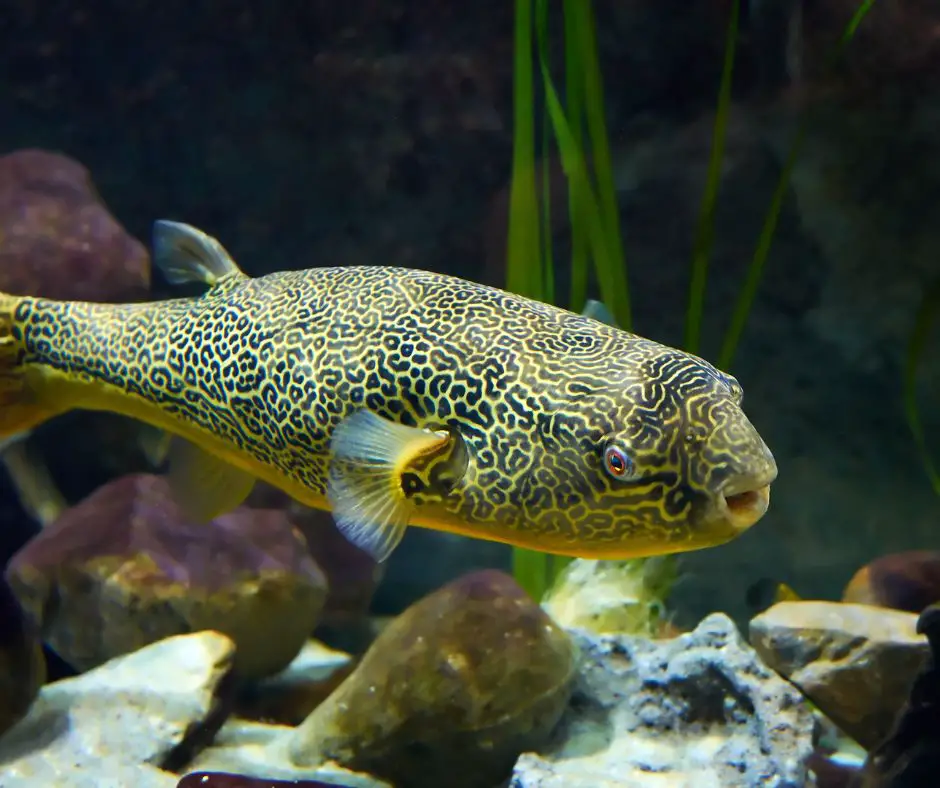
If you plan to keep either variety of pufferfish as a pet, then please do your homework before buying or adopting one. Research your particular species thoroughly. In the beginning, it might seem difficult to meet the fish’s exact requirements. However, with practice, you will soon learn and manage the tasks easily.
FAQs
Do puffer fish need salt water?
Not all varieties of pufferfish need salt water. There are nearly 30 different species of freshwater pufferfish that live out their entire lifecycle in fresh water.
Are saltwater puffer fish poisonous?
Almost all varieties of saltwater or marine pufferfish are poisonous. They carry the deadly Tetrodotoxin (TTX) in their organs. This toxin comes from their diet of shelled crustaceans that contain bacteria-laden with the TTX.
Are there any small saltwater puffer fish?
Yes. Species like the Narrow-Lined Puffer (arothron manilensis) are some of the smallest and grow to about 10 inches in length.
Where do puffer fish live in the ocean?
In the ocean, pufferfish may be found in the shallow waters near the shore. You might also find them on coral reefs. They are found in the Indian, Atlantic, and Pacific Oceans.
What do puffer fish eat?
Pufferfish eat hard foods like coral reefs, sea urchins, and shelf fish. They are also omnivores so they eat plants and animals. They even eat algae, worms, and sponges.
Conclusion – Do Puffer Fish Live In Saltwater?
Yes. Many species of pufferfish live only in saltwater. In fact; there are more than 80% of saltwater pufferfish varieties which means you have more choices in finding marine pufferfish as compared to freshwater pufferfish.
We hope this guide helps you understand the elusive pufferfish slightly better!
